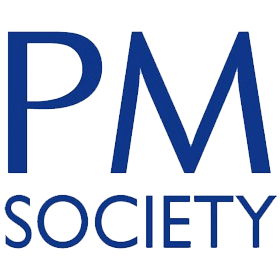In our most recent survey of procurement professionals within the healthcare sector and their outlook for 2023 (see the results at the end of this article), estimates of the amount of money in the world vary dramatically from between 50 to 90 trillion dollars – quantitative easing aside. This is actual money owned by someone or some institution. Borrowings, according to S&P Global, have reached 300 trillion dollars.1 So, a naïve view of this would be that the inhabitants of earth have gone bust.
Don’t panic. We’ve apparently estimated that our own global assets (everyone’s stuff – according to McKinsey), are worth north of 600 trillion dollars.2 So, we can afford to borrow that cool 210 trillion from…
…yeh, that’s the problem. You can imagine the conversation with the board at the Intergalactic Bank can’t you:
“It’s no problem, Slartibartfast (Earths Chief Architect in Hitchhikers Guide), we have global assets on our planet worth at least three times what we’d like to borrow. Let me introduce you to the dolphins.”

What does this mean for procurement professionals on earth working in the healthcare sector?
In our most recent survey of procurement professionals within the healthcare sector and their outlook for 2023, we learnt, unsurprisingly, that most are looking for new efficiencies. All of the procurement and marketing respondents to our survey perceive that savings of between 10-30% are required. You’d have to conclude that the pressure coming down from board level and the Chief Operating Officer (COO) being placed on procurement’s shoulders is serious.
Of course, savings can be made in several ways – the same spend but with added value, an avoidance of wasted spend, or a reduction in price.
Perhaps we can ask you to use your imagination again here. Imagine the scenario, a COO talking to the Head of Procurement (HoP). The HoP explaining, with a slightly sweaty brow, that right now (according to PWC and CSI Markets), marketing and communications agencies globally, are averaging 9% net profit.3
“Look COO, 9% minus the 10-30% you’re asking us to find equals ?! how the heck do you expect us to negotiate this sort of a reduction?”
Of course, the COO will retort that UK NHS , are looking for 26.5% rebate on all branded drug sales.4 They’ll say that come the next pandemic, they won’t be putting their hands in their own pockets again so that they can react to the emergency.
In fact, they won’t be looking to address any of the approximated 50% of known diseases we’ve yet to conquer6 because they won’t be able to afford the research and development. It’s estimated that one in every 5,000 drugs researched makes it to market, costing the industry an average of one to two billion dollars per drug.5 That said, the pharmaceutical industry remains exceptionally profitable, with pharma frequently reporting double-digit margins it is reasonable for agencies to ask why pharma is looking at agencies to cut costs. Supplier diversity is measured and celebrated within the Pharma industry, yet, given the massive consolidation of the agency sector over the past 5-6 years do we need to ask if the owner / entrepreneurial agency model is now at risk or are we on the hyper-space bypass to networked or private-equity backed agencies only.
Without doubt the COO will say it is not their direct problem and that the agencies will have to sell their Ferraris. The HoP will explain that it is no longer the 1980s. They’ll explain there is a talent war with ever-increasing salary expectations, that margins are squeezed so tight that the days when a business, like an agency, could comfortably afford to provide training, infrastructure and a sense of community are increasingly at risk of being in the rear-view mirror.
They will go on to make plain that this is not good when it is the agencies who are increasingly depended upon for campaigns that ensure healthcare professionals are appropriately exposed to medical education, market access and disease awareness – the stuff that ensures best practice and the most progressive therapeutic pathways are adopted.
Radical solutions are required along with a much stronger understanding of the challenges that all agencies and client organisations are facing in order to find a realistic solution that benefits the industry.
However, the CPO will only be able to explain all of this to their COO if they fully understand the issues – there’s no point in explaining the issues without offering some sort of solution. In fact, 72% of people responding to our survey incorrectly estimated the cost of labour within an agency. This highlights the need for procurement to better understand how agencies work in order to be profitable and that agencies need to appreciate the impact that continued budget cuts and associated pressures are having on client organisations.
It is clear that the CPO will not be able to provide their COO with a solution. This is because procurement professionals – an essential component within any mature business, particularly within the healthcare sector, (working for the pharmaceutical, medical device and biotech companies) – are under extreme time pressure. They do not have the time or bandwidth to talk to agencies as much as they’d like to. The opportunity to truly understand how the industry and agency world is evolving is limited to issuing RFP requests and documentation.
The combination of data and AI used to measure the effectiveness of a campaign could indeed be championed by procurement and that this combination provides real value for money. But to succeed properly there needs to be a partnership between client and agency to fully realise this value.
You’ll know the hurdles don’t stop there. Just as in Hitchhiker’s Guide to the Galaxy Arthur and his crew kept running into obstructive alien Vogon Officials, the genesis of any new RFP will immediately meet challenges due to the marketing department’s over-stretched, limited resources. More is expected from marketing these days and yet they have fewer resources than ever before. They are reliant on their agencies to invest time in building strong strategic partnerships offering more innovation and efficiencies for the same budget. So again, we’re caught in our own Vogon black hole: overworked, under-resourced, tackling constantly moving goal posts, without being able to afford to be considerate of other parties’ time, resourcing or costs.
Only 14% of the people who responded to the Pharmaceutical Marketing Society’s (PM Society) recent procurement survey were procurement professionals. The others were marketing and agency and they all (76%) supported the view that it is a challenging scenario – people are being stretched to breaking point.
Shockingly, only 43% of client organisations supply evaluation criteria when asking agencies to submit an RFP and they are only provided when associated with a specific project or campaign. It would benefit both agency and client organisations if it was made clear at the outset that cost reduction was the number one business objective. Agencies could then decide whether to participate or not, and those that do would be submitting within this context. There is no reason not to share scoring criteria with agencies if there is a desire to build a true strategic partnership. Everything works on trust and transparency, so these principles should be in place from the start.
Of course, there are some very smart and progressive procurement professionals who understand best practice, who are great at communication and some are involved in the sector’s representative body, the PM Society. They shine like bright beacons and everything they touch turns to gold (which is handy given the disconnect between actual money and borrowings on planet earth).
This is not an exaggeration. Everything they touch does turn to gold. They not only save their employer money, using budgets efficiently, but their campaigns are more effective – they change the beliefs and behaviours of healthcare professionals.
Not only do these individuals help to address the huge global deficit but, more importantly, they contribute to better healthcare outcomes in terms of quality of life for patients and financial outcomes for healthcare organisations.
So, the radical solution? There is a need for better and stronger relationships. Procurement talking to agency and arriving at solutions that are beneficial to both parties. Agencies need to understand their clients – specifically the pressure on procurement. Procurement should not be seen as a scary monster emerging from deep space coming in solely to cut costs. Equally, if procurement’s priority is to save money, they need to communicate this at the outset so that agencies can respond appropriately. Procurement teams are key and uniquely positioned to educate their own organisations. We all need progressive procurement professionals who spread positive best practice so stop us from being sucked into some awful black hole.
Where do we all waste time and money?
Why do clients go on the hunt for new agencies? It is generally because they no longer feel they have the best working relationship and there could be a more innovative, sustainable, efficient, cost saving agency out there, (they are constantly approached and tempted by flashy case studies and credentials from other agencies). How much of that downturn could have been stopped if a closer working relationship had been developed? If there was a better understanding of the specialist teams that sit within agencies? If agencies had sufficient time to work on campaigns? Campaigns that are not briefed and re-briefed sometimes numerous times?
The current set up doesn’t work for agencies, for marketing or for procurement. And as a result, it leads to time wasted on all sides of our industry, time that can be better spent adding value and not left on the table.
You’ll know that there is always money left on the table – but the value of this can only be realised if agency and marketing find ways to educate procurement and likewise, procurement communicate the challenges of business (profit, loss and shareholder value) to agency and marketing.
Finding the time to invest in the growth and evolution of both agency and procurement and each understanding how the other works is likely to be the most challenging ask. The continued pressure for quick results without the time to invest in true long-term strategic partnerships, will limit the capacity to change the ways of working which will ultimately prevent money from being left on the table.
Ask anyone who works within a Client Relationship Team in an agency, and they’ll tell you that the numerous rounds of amends could be avoided. Ask anyone who leads an agency or a client-side marketing team and they’ll tell you that it is the strength of the relationship that results in a great campaign, not a pitch. It is chemistry, process and experience over the beauty parade and yet the majority of procurement professionals (those responding to our survey,) place ideas (pretty and beautiful things) over strategy and return-on-investment. We speculate that perhaps this is because it is what expected of them.
The average cost of responding to an RFP for an agency is between 20,000 to 40,000 dollars according to our respondents. The cost to the client organisation to run an RFP is unlikely to be considered or known by either agency or marketing. Client organisations also invest resources across multiple functions including Marketing, Procurement, Finance, Legal therefore it is imperative that all pitches and tenders are held for the right reasons – they need to be all in. The cost to these client businesses will easily match the cost to the agency. That’s money coming straight off the bottom line and reducing net profit – this money is not made back. Win or lose, the cost of executing a pitch by an agency becomes part of their overhead. This overhead then becomes a component of fees charged to existing and new clients. So, when agencies pitch their costs go up.
So, is it always a waste of money? No, of course not. But it is absolutely a waste of money (and time) for everyone if the process is not a robust one (then it’s just a beauty parade).

There is undoubtedly opportunity to engage with incumbent agencies in a much more mature way – to have a realistic, two-way conversation as to why things aren’t working well. Having these conversations will lead to stronger relationships across the board and reduce unnecessary pitches.
Imagine if procurement could invest the time to actually visit agencies, to truly understand their experience and credentials? What would happen if procurement and agencies took a deeper interest in process and worked with client relationship teams to ensure efficiencies were achieved?
And what if this saving was passed on?
Just the beginning
In truth, the above points are just the beginning. The agency model is in flux. Some smart people – casualties from the talent war have started to develop new agency models.
There are people out there combining data with science and creativity. There are agencies who are very focused on ensuring better outcomes for patients and healthcare organisations but if they’re to bring about the kind of change Slartibartfast, the earth’s architect from Hitchhiker’s Guide to the Galaxy, would buy into, they need procurement and business stakeholders to collaborate with them.
And of course, if you’re not keen on co-creating better process, if you are happy to leave money on the table you can always offer up a dolphin* or two to pay off your debt. After all, what could be more fun than to be the centre of attention precisely because you’re part of that 210 trillion-dollar deficit?
It’s not as if there aren’t people out there who need the help of the healthcare industry is it?
Now hopefully you’re asking what can you do to become part of this new collaboration?
The PM Society is a safe environment for procurement professionals, for marketers and for agencies. Join us. Come on in and take part. We can even introduce you to Slartibartfast. Actually, we can’t but we can listen to your point of view and we’re keen to develop a universal set of best practice guidelines to ensure everyone benefits from procurement, to agency, to patients. We don’t have Slartibartfast, or even dolphins, but we do have procurement experts on the team.
*In his introduction to Hitchhiker’s Guide to the Galaxy Douglas Adams talks about how unhappy people are due to the movement of small green bits of paper (money) around the planet, which is odd because money itself is not unhappy. The dolphins have been trying to warn mankind of impending doom and are vastly more intelligent than the inventors of the silicon chip. Slartibartfast is the gentleman within Hitchhikers Guide who sculpted the Fjords and other aspects of the earth’s terrain.
Hitchhiker’s Guide to the Galaxy is ranked 4th in the BBC’s Big Read poll. The broad narrative of Hitchhiker’s Guide to the Galaxy follows the misadventures of the last surviving human, Arthur, further to the demolition of the earth to make way for a hyper-space bypass. Douglas Adams, in Hitchhikers guide to the Galaxy, predicted many aspects of life and concepts that have since come to reality, in particular the guide itself, which is described as a small book-sized object that held a great volume of information, pre-dating computers, laptops and mobile phones.
2023 Procurement article
Published by PM Society
Stephen Page, Co-Chair, PM Society Agency Industry Relationship Group
Written by Stephen Page and Paul Morrissey based on research and insights developed by the PM Society Agency Industry Relationship Group (Patrick Kearns, Ram Patel, Tess Wulf, Rod Ball and Rachel Farrow).
PM Society 2022 Procurement Survey
In October 2022 the Pharmaceutical Marketing Society (PM Society) ran a brief survey canvassing professionals within the healthcare marketing and communications sector, within industry and agency, responsible for procurement, commercial, marketing and client relationships. Our survey tapped into the conversations going on between all these stakeholders with a primary focus on procurement’s likely agenda in 2023.
Through the results of this survey and our discussions with our procurement team members, it has become evident that procurement often end up as the sole scorers of agency RFP submissions because marketing stakeholders continue to be stretched in terms of bandwidth and time. Best in class would be both procurement and marketing stakeholders scoring, especially since marketing will be the future owners of the agency relationship, and they have a good understanding of the full scope of ‘experts’ that are within a healthcare agency, and the cost that comes with that.
In addition to that we found that the complexity of the service and the estimated spend influences the seniority of the procurement people running the strategic sourcing/RFP process. More senior decision makers know how to navigate the challenges of over-stretched marketing teams and legislate for the realities agencies face as businesses, so are more likely to make informed decisions compared to less experienced individuals who will be running the less complex and lower value RFPs. This goes some way to explain the varied experiences that agencies have when working on RFPs.
Some findings from our survey:


The PM Society is currently producing best practice guidelines for procurement within the pharmaceutical, biotech, medical device and healthcare sector. Following a consultative process these guidelines will be made available to PM Society members and their clients.
References:
- Global debt leverage, is a great reset coming?
- Global balance sheet 2022: Enter volatility
- Advertising Industry Profitability
- UK medicines revenue clawback rockets to 26.5% putting Life Sciences Vision at risk, says ABPI
- Drug Discovery and Trends
- Washington Post link 1 or link 2
